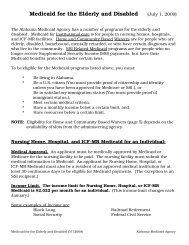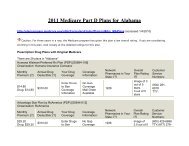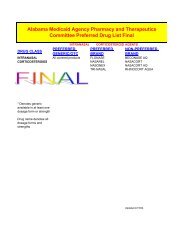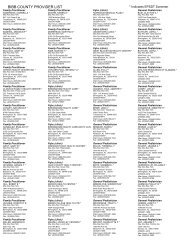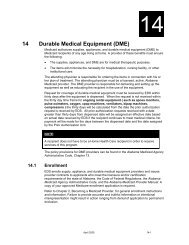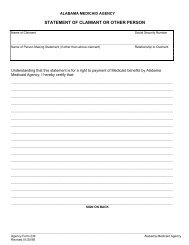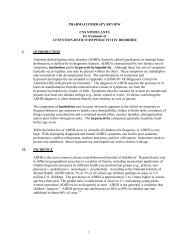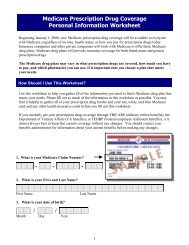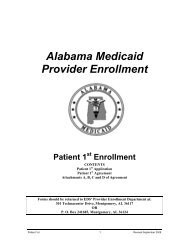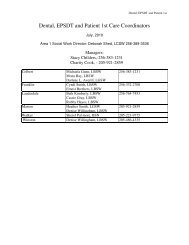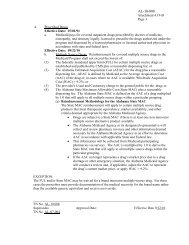Appendix A Well Child Check-Up (EPSDT)
Appendix A Well Child Check-Up (EPSDT)
Appendix A Well Child Check-Up (EPSDT)
Create successful ePaper yourself
Turn your PDF publications into a flip-book with our unique Google optimized e-Paper software.
<strong>Well</strong> <strong>Child</strong> <strong>Check</strong>-<strong>Up</strong><br />
6-13 years<br />
Nutrition<br />
Safety<br />
Dental care<br />
School readiness<br />
Onset of sexual awareness<br />
Peer relationship (male and female)<br />
Preputertal body changes<br />
Substance abuse<br />
Contraceptive information (if sexually active)<br />
14-21 years<br />
Nutrition<br />
Dental<br />
Safety (automobile)<br />
Understanding body anatomy<br />
Male/female relationships<br />
Contraceptive information<br />
Obedience and discipline<br />
Parent-child relationships<br />
Alcohol, drugs, and smoking<br />
Occupational guidance<br />
Substance abuse<br />
Providers may use the PT+3 teaching method for anticipatory guidance<br />
counseling. Providers should document PT+3 counseling was utilized and list the<br />
three points emphasized.<br />
Billing Requirements<br />
The table below provides billing information for <strong>EPSDT</strong> screening claims:<br />
Topic<br />
Copayment<br />
Prior Authorization<br />
Referral<br />
Time Limit for Filing Claims<br />
Visit Limitations<br />
Diagnosis Codes<br />
Procedure Codes and<br />
Modifiers<br />
Explanation<br />
<strong>EPSDT</strong> recipients, under 18 years of age, are not<br />
subject to co-payments.<br />
Screenings are not subject to prior authorization.<br />
Please refer to Section A.4, Providing and Obtaining<br />
Referrals, for more information.<br />
One year from the date of service<br />
An office visit is not billable on the same day with an<br />
<strong>EPSDT</strong> screening by the same provider or provider<br />
group.<br />
The International Classification of Diseases - 9th<br />
Revision - Clinical Modification (ICD-9-CM) manual<br />
lists required diagnosis codes. These manuals may<br />
be obtained by contacting the American Medical<br />
Association, P.O. Box 10950, Chicago, IL 60610.<br />
The following procedure codes should be used when<br />
billing comprehensive <strong>EPSDT</strong> screening services:<br />
99381-99385 with modifier EP Initial <strong>EPSDT</strong><br />
Screening<br />
99391-99395 with modifier EP Periodic <strong>EPSDT</strong><br />
Screening<br />
99173 with modifier EP Vision Screening – Annual<br />
92551 with modifier EP Hearing Screening – Annual<br />
Effective January 1, 2007 the interperiodic screening<br />
codes have changed. The following procedure codes<br />
(in service locations other than inpatient hospital)<br />
must be used:<br />
99211EP-99215EP<br />
You must use an EP modifier in order to bypass office<br />
visit benefit limits.<br />
For interperiodic screenings performed in an inpatient<br />
hospital setting, the following procedure code must be<br />
used:<br />
99233EP<br />
You must use an EP modifier in order to bypass<br />
hospital visit benefit limits. Interperiodic screening<br />
codes should have abnormal diagnosis codes.<br />
The (837) Professional, Institutional and Dental<br />
electronic claims and the paper claim have been<br />
A-28 January 2011




